Your wildlife garden part 2 – Feeding birds
Bird feeding is not only a highly popular activity, with the UK spending around £200 million a year on this particular habit, but also plays a vital role in helping wild birds stay healthy and active throughout the year. In this blog we’ll be looking at the most frequently asked questions about feeding your garden birds.
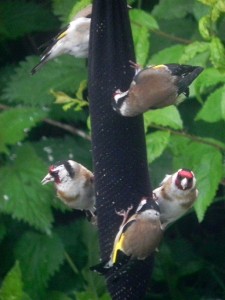
The most common question is when should you put out food for wild birds? The answer is a simple one, all year round, as winter is not the only time birds are under stress. Feeding during spring time helps the adults with a steady source of food for their young, the warmer summers dry out the ground making it harder for many bird species to source food, and during the autumn months birds will need the extra resources for moulting and preparing their bodies for the harsh winter.
The next question is what type of food should you supply? While this will depend greatly on which species you want to attract to your garden, but if you want to attract a greater variety (and why wouldn’t you?) you need to remember that birds have evolved to take advantage of different food sources and you need to mirror this with your food selection. So here’s what you can feed your birds:
- Mixed seeds: These vary greatly in quality and content so always check the ingredients before buying a pack. The best mixtures contain flaked maize, sunflower seeds and peanuts. Small seeds, like millet, are great for sparrows, finches, and dunnocks, while larger peanuts and sunflower seeds will attract tits and greenfinches. It’s worth noting that the cheaper mixes usually contain a high level of cereal grains, only really favoured by starlings, pigeons, doves, and pheasants which can frighten off smaller species. Also avoid any mixes containing green and pink lumps as these are dog biscuits and can only be eaten if soaked in water first.
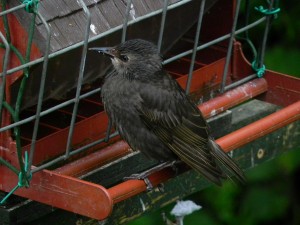
- Black sunflower seeds: These are high in oil, making them a great source of food all year round. Especially favoured by greenfinches and tits, the only downside is the pile of husks that will accumulate underneath the feeder.
- Sunflower hearts: With the same oil content as the black sunflower seeds, but without the husks, these are a good alternative. They are on the pricier side, but the upside is that the birds are able to consume these seeds faster and there are less husks left for you to clean up.
- Peanuts: High in fat and protein, peanuts are a great source of energy and attract a large variety of birds including tits, greenfinches, great spotted woodpecker and siskins. Providing crushed nuts at ground level will increase the variety to robins, wrens, and dunnocks. Make sure that the peanuts provided are not salted or dry roasted, always stored in a cool dry place, and brought from a reputable dealer to ensure they don’t contain a natural toxin called aflatoxin which is deadly to birds. If you are providing whole peanuts always ensure that they are kept in a metal mesh feeder to prevent the birds from removing the nut whole. This is especially important during the breeding season as chicks can choke on whole nuts if unwittingly fed one by their parents.
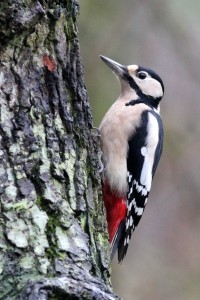
- Nyger seed: Also high in oil, these are great for birds with delicate bills like goldfinches and siskins. Just remember you will need a specialised feeder for this seed, but these are now readily available.
- Fat balls, bird cakes and food bars: These are especially good in winter as the fat is an easy source of calories, needed to fight the cold. When buying these remember to remove any nylon mesh bags before putting them out in the garden as these can trap birds, causing serious injury. You can also make your own by pouring melted fat into a mixture of seeds, nuts, dried fruit and cheese (at a ratio of 1:2), mix well and allow to set in a container. While an empty coconut shell works great, you can also use plastic cups or allow it to set flat in a baking tray and cut into slabs to put on your bird table. The fatty mixture, or just fat on its own, can also be smeared into cracks in tree bark to attract treecreepers and woodpeckers. Only use pure lard or beef suet for this as they solidify when cold and, being pure fats, are not suitable breeding grounds for bacteria.
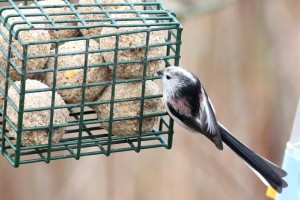
- Mealworms: These are actually the larval stage of beetles and are especially popular with robins, blackbirds, and blue tits. As these are a natural sources of food they can be fed to birds all year round, but always ensure that they are fresh as there is a risk of salmonella poisoning. This can be a pricey food to provide though, and it’s worth looking into ‘growing your own’ if you think you can stomach it.
- Bread, rice and oats: All types of breads are fine for birds, but should only be offered as part of a variety diet as it is only a filler and doesn’t contain the fats, vitamins, and proteins birds need. Brown is better than white and make sure that the bread is not stale as this is harder to digest. During the breeding season only put out bread crumbs as this ensures that only the adults can eat it. Large chunks of bread can choke chicks and, if it is the main source of food provided to them, reduce their chances of developing into healthy fledglings. Cooked rice is beneficial to all birds, especially over the winter months, but uncooked rice will only be eaten by pigeons, dove and pheasants. Oats are also great, but never put out cooked oats as this will harden around the beaks.
- Fruit: Any fruit is good for birds, even if bruised and partly rotten. Cut up into small pieces they will mainly attract starlings, tits, and thrushes. Dried fruit are particularly enjoyed by robins, blackbirds, and song thrushes. If you’re putting them out in spring and summer soak them in water for a few hours first to prevent them going hard in the heat and to increase the amount of fluid the birds are able to intake. Just remember, grapes, sultanas, and raisins are toxic for dogs. Make sure you place them out of their reach.
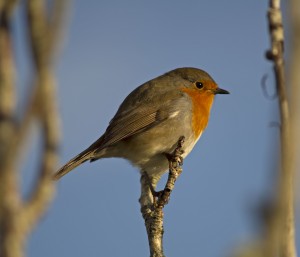
And what you shouldn’t:
- Anything with salt: garden birds are unable to metabolise salt and high levels are highly toxic, affecting their nervous system. Never put out any food containing salt and, if you’re putting out food scraps, ensure that no salt has been added in the cooking process.
- Cooking fats: The issue with cooking fat is that it is not only fat, but is instead a combination of animal fat and meat juices. This has a soft texture when set, with a tendency to smear and damaging the feather’s waterproofing and insulating properties. This is particularly dangerous over the winter months. It’s also a perfect breeding ground for bacteria and may contain salt, found in the meat itself or added during the cooking process.
- Margarines and vegetable oils: While these aren’t dangerous for birds, they don’t contain the high energy levels the birds need especially in cold conditions. This can only be found in saturated fats.
- Milk: This should never be given to birds, they are unable to digest this type of dairy product and it can lead to digestive problems and death. However, fermented dairy products are fine and grated cheese is a good way to attract robins and wrens to the garden.
- Sugary treats: They’re not good for us and they’re not good for them.
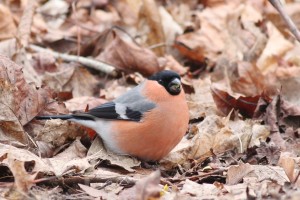
How much food you put out depends on how many visitors you get to your garden. Start of with small amounts and then increase to fit the demand. That way you ensure that you always provide fresh food for the birds and reducing the chance of getting any unwanted visitors. And remember, no matter how small your garden is, there’s always a little room for birds.
Georgina Bowie, Visitor Centre Assistant
Help protect Scotland’s wildlife
Our work to save Scotland’s wildlife is made possible thanks to the generosity of our members and supporters.
Join today from just £3 a month to help protect the species you love.
Preface
Bird feeding is not only a highly popular activity, with the UK spending around £200 million a year on this particular habit, but also plays a vital role in helping …
